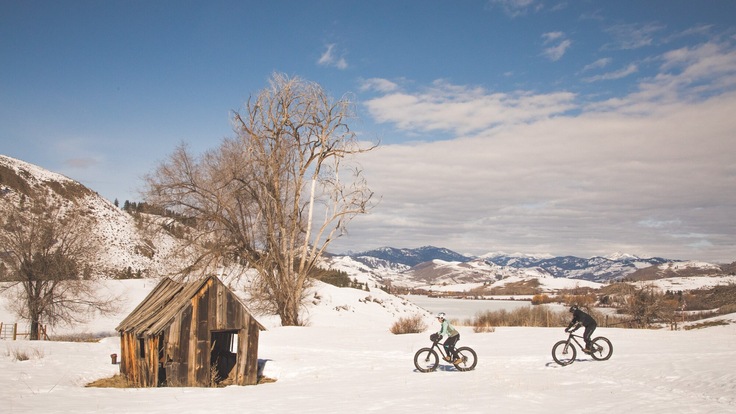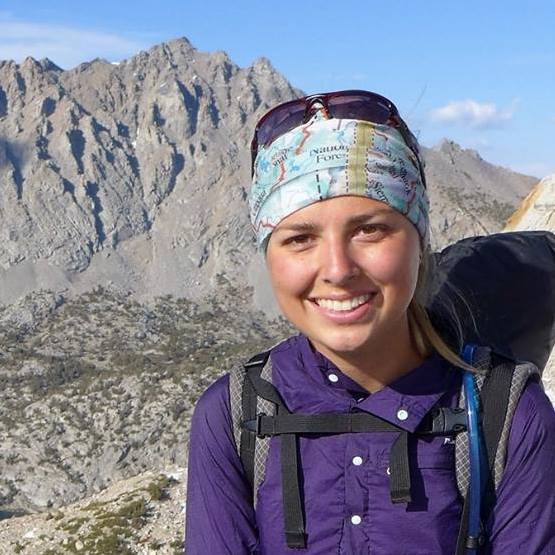When a powder report beckons, it can be exciting to rummage through the gear closet and begin planning a snowy backcountry adventure. But you probably aren't the only one stoked to get out on the snow! Whether you're planning on cross-country skiing, alpine touring, splitboarding, snowshoeing or fat-tire biking, you're bound to encounter other adventurers when you're out on the trail. Here are some backcountry etiquette tips to consider before stepping foot on snow.
General Guidelines for All Trail Users
1. Learn the trail's usage rules
Not all modes of transportation are allowed on all trails, so make sure your chosen activity is allowed before heading out by calling or visiting the website for the land manager who oversees the trails you plan to visit. This goes for bringing along well-behaved furry friends as well.
2. Find the grooming schedule for the trails you're using
If you're planning on heading out on groomed trails, it's best practice to wait at least two hours after grooming to let the snow harden up and establish the right surface consistency. Your local land manager should be able to provide the grooming schedule for your preferred location.
3. Have some knowledge of avalanche terrain
Even if your activity doesn't travel through avalanche terrain, consider equipping yourself with avalanche training and be sure to check snow conditions before heading out. Your actions in the backcountry can have a serious impact on others, including search and rescue volunteers. Everyone in your group should have some level of avalanche knowledge. Learn more about avalanche basics.
4. Move off the trail whenever you need to stop
Whether you need to de-layer or you're stopping for lunch, make room for others who are passing by. A snow shovel can be useful for creating a break area, including snow couches!
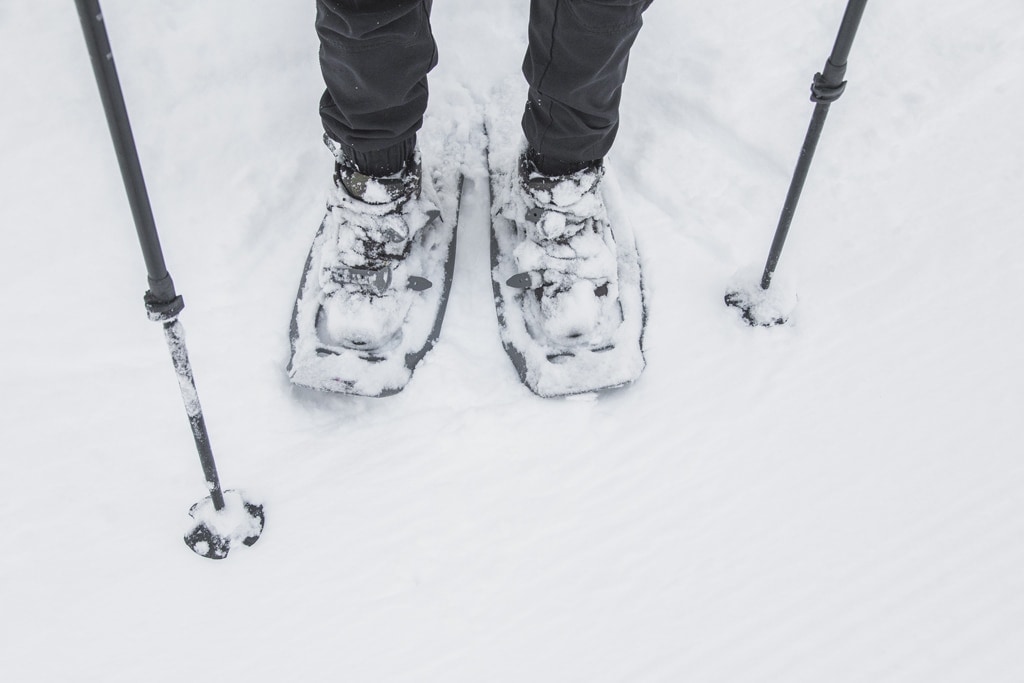
5. Always practice Leave No Trace principles
Leave No Trace principles are important any time you're away from civilization. From packing out garbage to minimizing the impacts of human waste, make sure you know the best practices before heading into the backcountry. Learn more by reading Winter Camping Basics.
6. Be respectful
A good rule of thumb for all aspects of life, simply respecting others will take you a long way in maintaining harmony with your fellow backcountry travelers. Everyone is out there to have a good time, just like you.
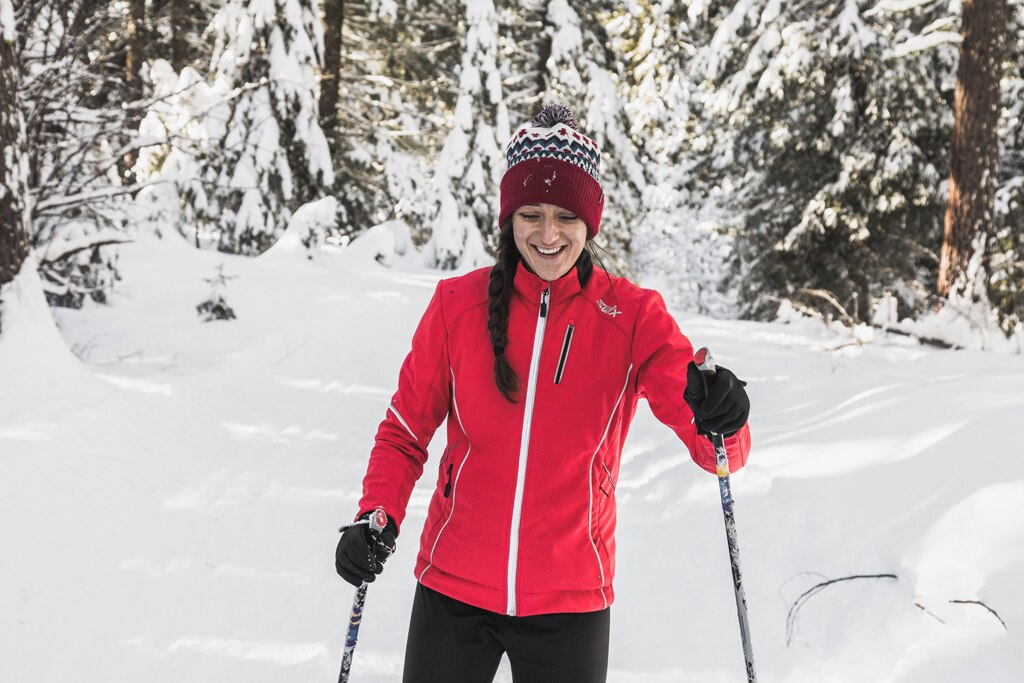
In addition to the tips listed above, below are some guidelines that are specific to the type of activity you might be planning to do. Please note that this list is meant to get you started, not to be exhaustive. For more information about how to cross-country ski, snowshoe, tour or fat-tire bike safely through the backcountry, consider taking a class at your local REI.
Guidelines for Cross-Country Skiers:
1. Go the right direction
Most trails are two-way streets, but some are one-way only. For safety reasons, know the trail map (usually available online, at the trailhead or at a local gear shop) and go with the flow of traffic to avoid a collision.
2. Know who has the right-of-way
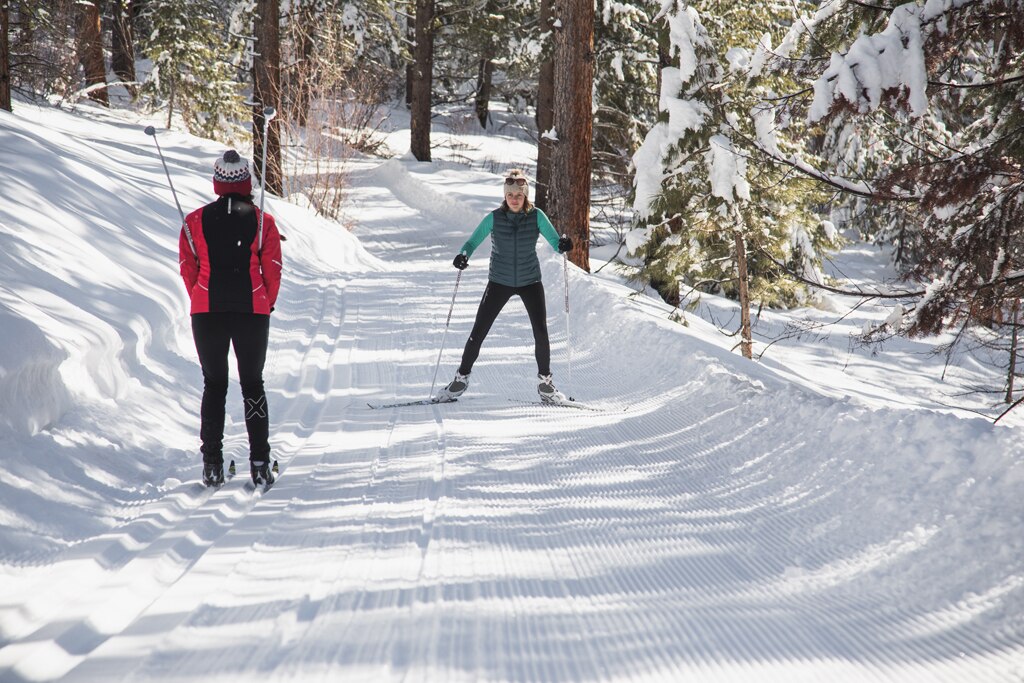
People traveling downhill always have right-of-way in the tracks because they are likely moving at speed and can't stop easily. If you are in front of someone faster than you, it's technically correct to move aside and let them pass. Skiers will often signal with a "Hup!" or "Behind!" to alert others to their presence. In actual practice, more experienced (and therefore faster) skiers are often glad to move around slower beginner skiers who might be uncomfortable getting out of the tracks and will call out to indicate which side they will pass on. Overall, however, right-of-way comes down to common sense. Being polite and conscientious will take you far.
3. Fix your divot
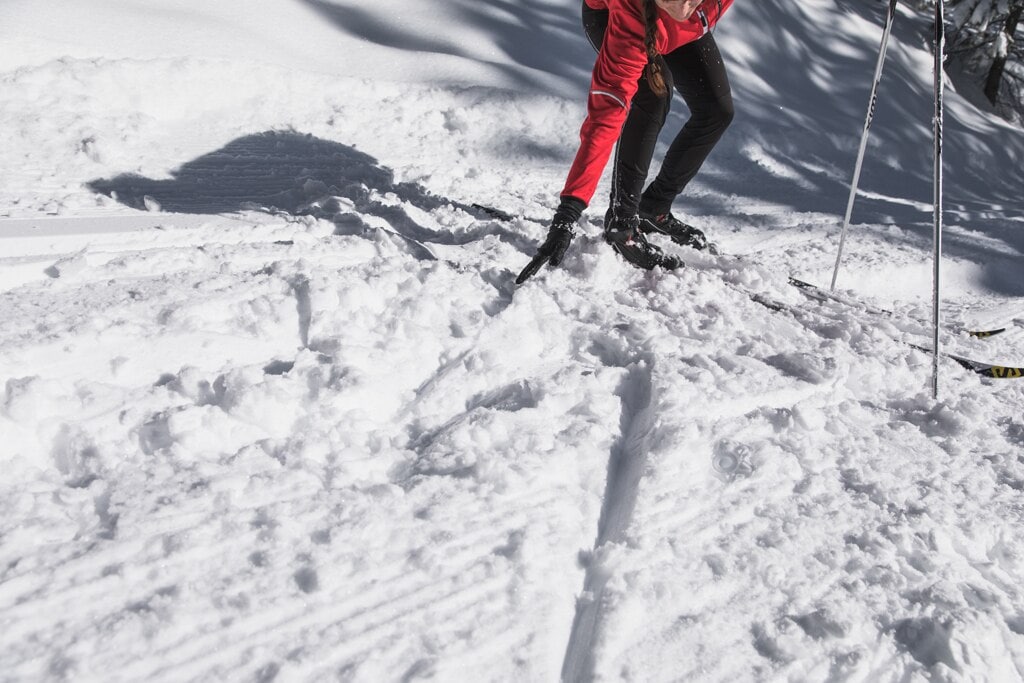
Falls are inevitable, particularly when you're just starting out with cross-country or skate skiing. What's important (aside from getting back up and trying again) is fixing the divot you made when you fell, especially if you disrupted part of the ski track. Other skiers rely on those tracks and a missing segment may cause others to crash and burn as well. Use the loose snow from your fall to fill in the hole and smooth the surface as much as possible. If the divot is in the tracks, use your skis to press down the loose snow and reform the track walls.
Guidelines for Snowshoers:
1. Stay out of the ski track
Whether you see a groomed cross-country ski track or a skin track set by backcountry skiers and splitboarders, when snowshoeing, you should avoid walking in these lanes. Skis and boards rely on regular traction and smooth forward motion to get into a mile-eating rhythm.
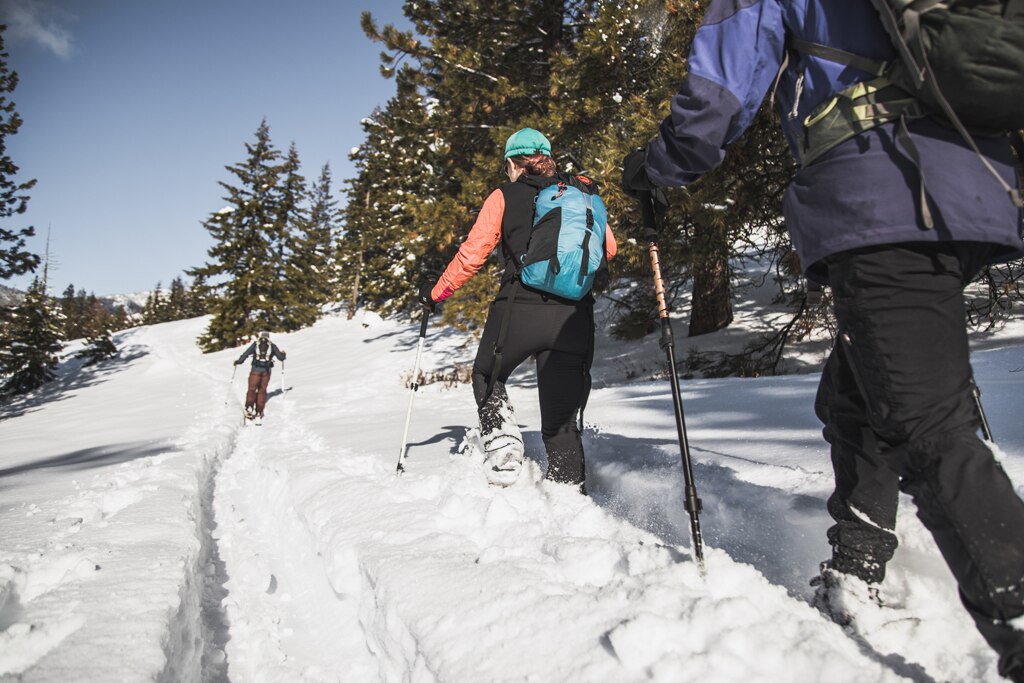
As soon as a snowshoe hits the trail, that even plane is disrupted, ruining the terrain for the users to come. There will often be a snowshoe trail for you to use, but if there's not, forge your own path. Depending on your location, in addition to regular trails, there may be some groomed cross-country ski trails you can pay a fee to use. It's best practice to stay as far to one side of the groomed track as possible and walk single-file to minimize impact on the corduroy.
2. Yield the trail
Uphill travelers the have right-of-way, just like on hiking trails. Make sure to move aside to enjoy a snack or take a break. If you're on a multiuse trail, make sure to keep an ear out for snowmobiles.
3. Don't posthole
Avoid wandering around in deep snow without your snowshoes on; you could inadvertently disrupt a trail with postholes that can be dangerous for other users.
Guidelines for Alpine Touring Skiers and Splitboarders:
1. Be aware of the terrain
When setting the uptrack, you should have two goals: staying safe and maintaining options. Don't trek to a spot that forces you to make steep kickturns. Long traverses help prevent backups and minimize the number of people beneath a potential avalanche. On the flipside, avoid cutting through the snow you want to ski down. Nothing kills the stoke like a skin track right through your powder line.
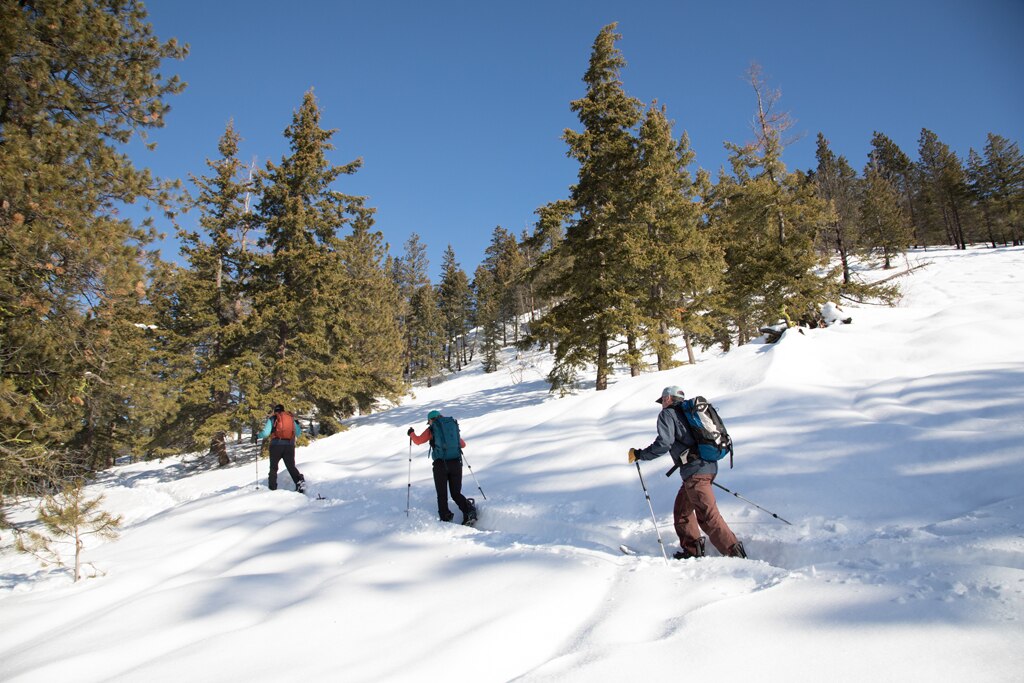
2. Set a proper skin track
If you're the one setting a skin track, your trail will likely stick around for awhile—be aware of others who will come after you. Don't make it too wide or too steep. Efficiency is the name of the game, with a careful balance between elevation gain and avoiding wasted energy.
3. Look before you drop
Before you drop in to that beautiful bowl you worked so hard to get to, check to see what's below you. If a skin track is beneath the ski zone, you'll want to make sure it's clear of users moving uphill before you start shredding.
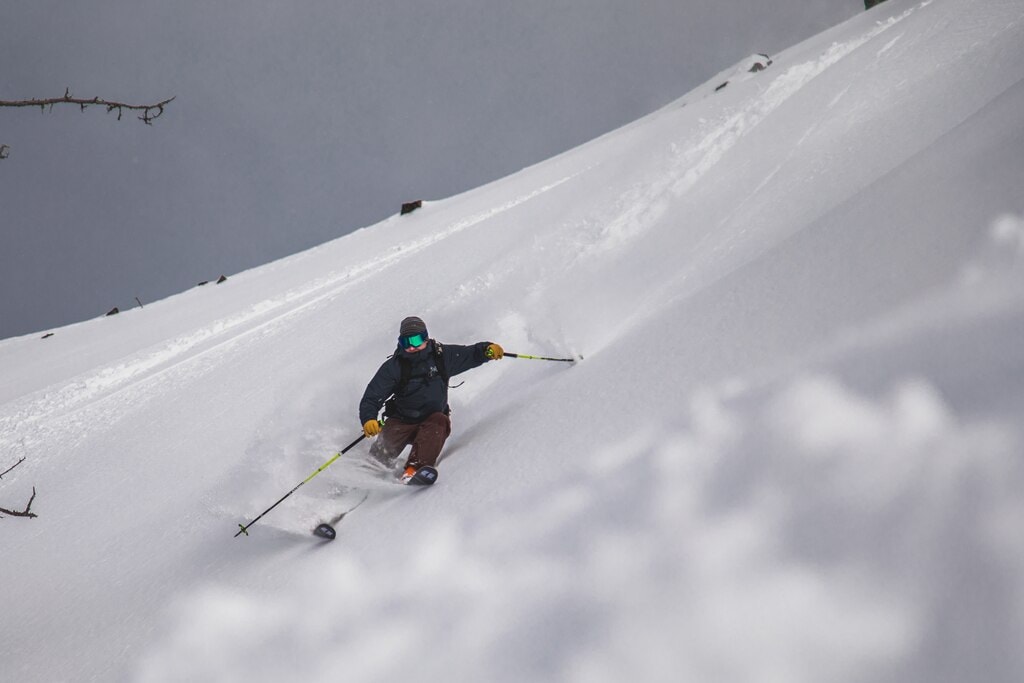
Guidelines for Fat-Tire Bikes:
1. Air down
Always adjust tire pressure to the snow conditions so your tires have maximum traction with minimum impact. Generally, the softer the snow the lower the pressure should be. Start with 4-5 psi for soft conditions and air down as needed, and 6-8 psi for harder surfaces. Learn more about adjusting your tire pressure here.
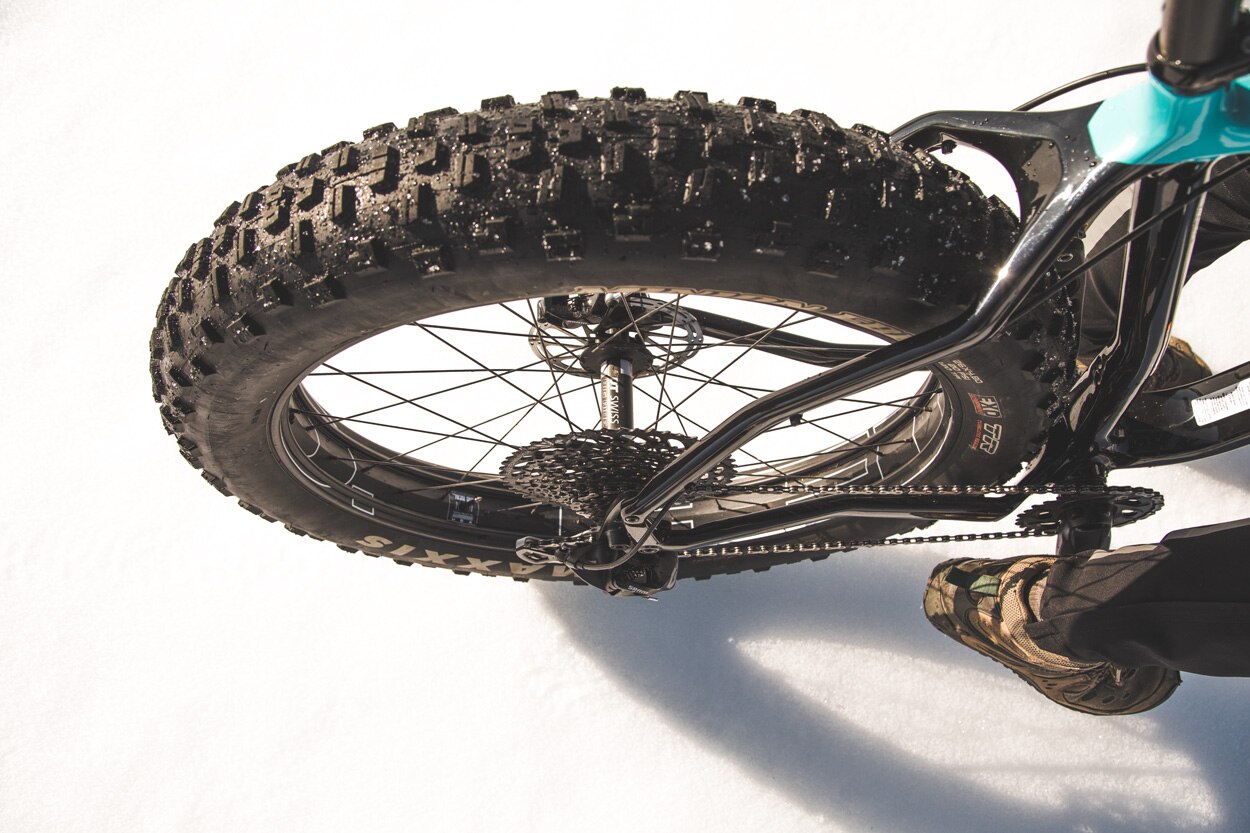
2. Never ride on ski tracks
If you're riding on groomed cross-country trails where fat-tire bikes are permitted, stay in the middle of the open groomed run and never ride across the ski tracks.
3. If you're sinking, go home
Groomed trails need time to set up, and sometimes the snow is just too soft for a good ride. If you've lowered your tire pressure but you're still sinking, head home and try again another day. In a similar vein, avoid postholing or walking through deep snow on the trail in your boots.
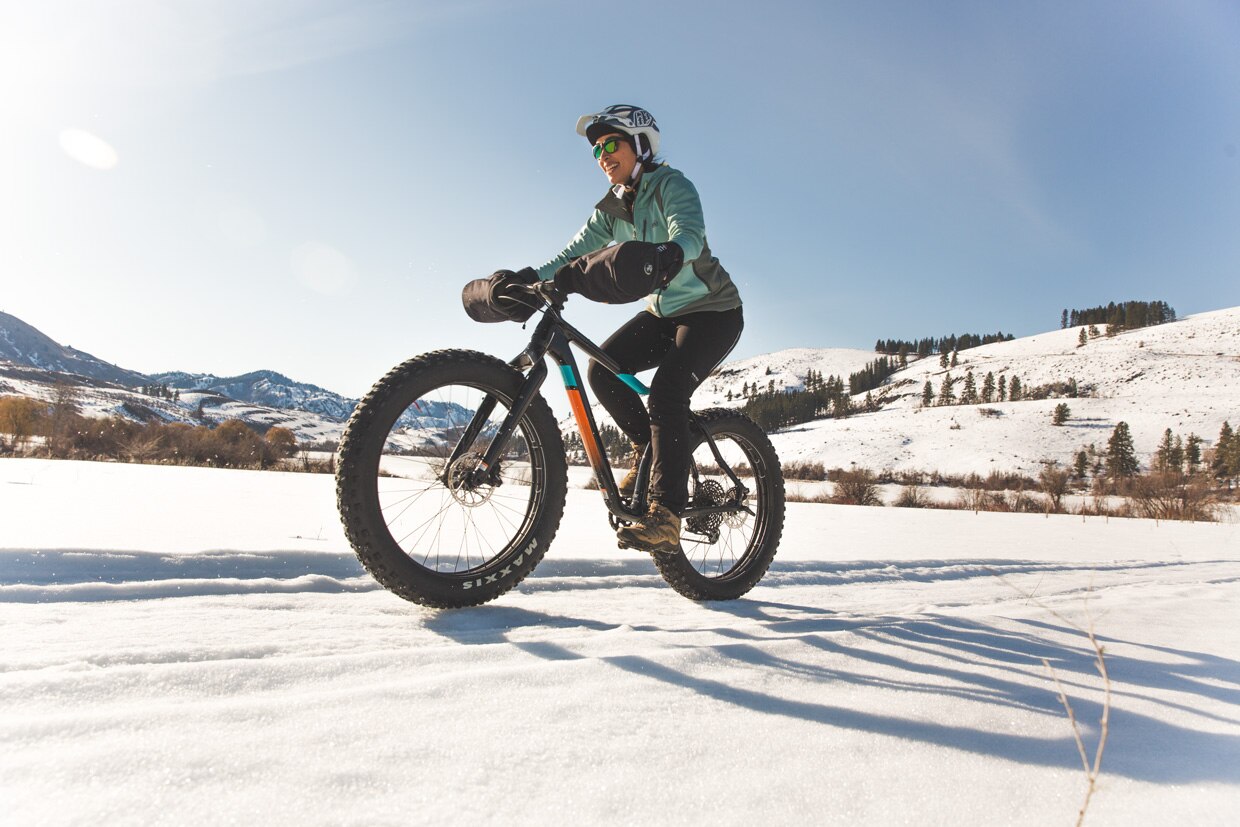
4. Stay visible
Ride with lights and reflectors, particularly when you're on trails frequented by snowmobilers and skiers. These fast-moving users need all the time they can get to see you and adjust their positions if necessary.
5. Yield to others
Fat-tire bikes should yield to all other users on multiuse trails, similar to the etiquette for bikes on summer hiking trails.
A Note on Snowmobiles:
Snowmobiles should slow down when passing nonmotorized travelers. Be sure to give them plenty of room to do that, though. You will likely hear them coming long before they can see you. If there's more than one snowmobiler, the lead rider will often hold up fingers indicating the number of machines behind them. The last rider with signal with a closed fist to indicate the coast is clear.
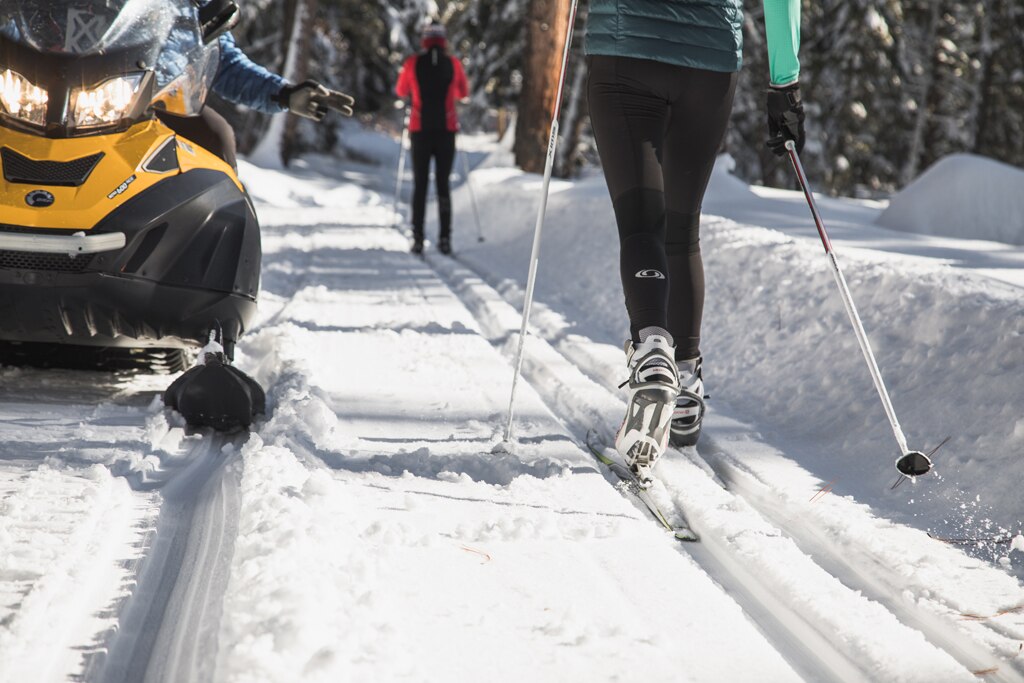
If you want to dive deeper into any particular snow skills, check out our Expert Advice articles on snowsports. There's a winter activity for nearly everyone, so have fun, be safe and say "hello" to your fellow snow enthusiasts!
